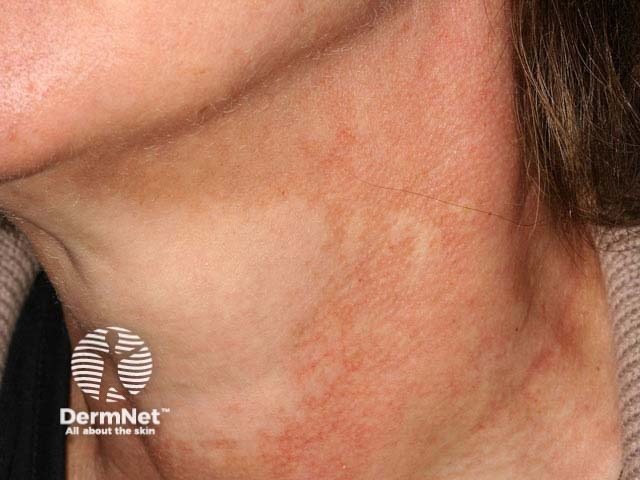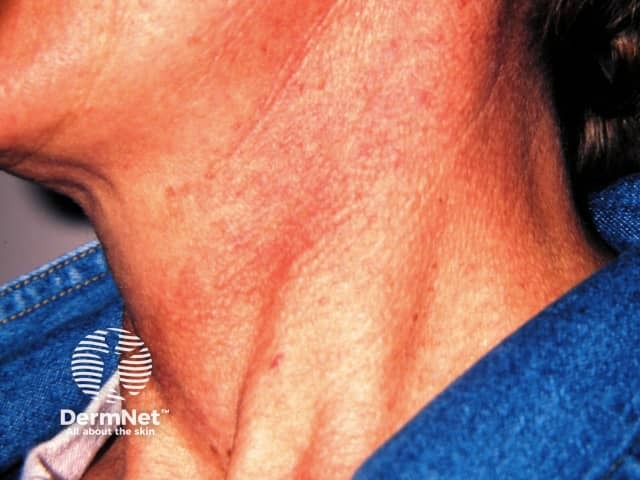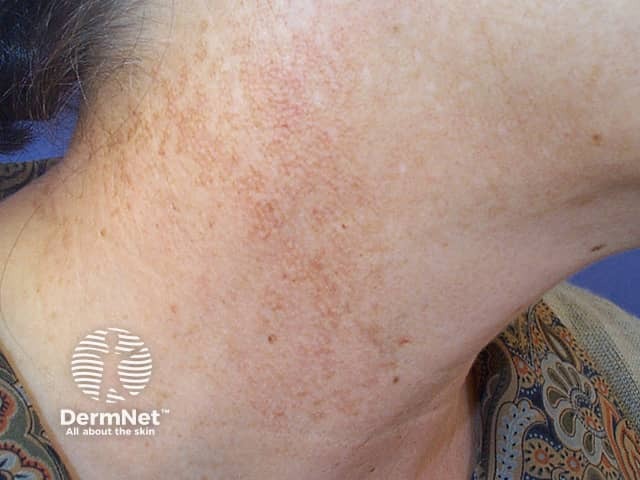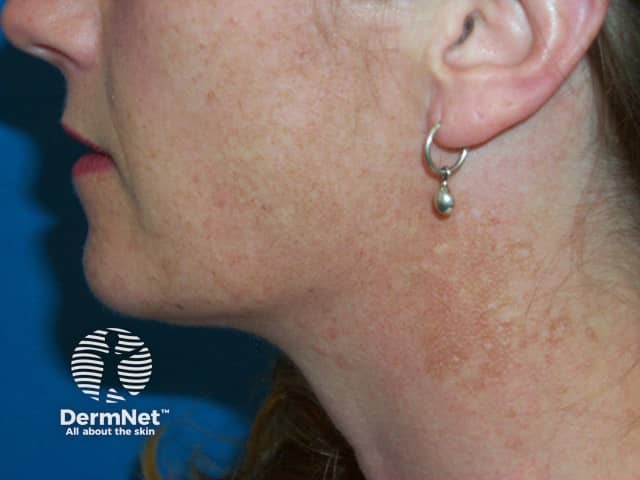Main menu
Common skin conditions

NEWS
Join DermNet PRO
Read more
Quick links
Author: Dr Amanda Oakley, Dermatologist, Hamilton, New Zealand and Vanessa Ngan, Staff Writer, 1998. Updated by Dr Anita Eshraghi, Dermatologist, Sweden. January 2018.
Introduction Demographics Causes Clinical features Complications Diagnosis Differential diagnoses Treatment Outcome
Poikiloderma of Civatte is a benign, common and chronic condition, which belongs to the group of melanodermas (pigmented skin disorders). The term 'poikiloderma' refers to a skin change with atrophy where hypopigmentation/hyperpigmentation changes and dilation of the fine blood vessels (telangiectasia) can be seen in the affected skin.
The condition was first described in 1923 by a French dermatologist named Civatte.

Poikiloderma of Civatte

Poikiloderma of Civatte

Poikiloderma of Civatte

Poikiloderma of Civatte

Poikiloderma of Civatte

Poikiloderma of Civatte
Poikiloderma of Civatte is most common among middle-aged and elderly fair-skinned individuals, especially among those who are significantly exposed to the sun. The highest frequency is seen among postmenopausal women. The incidence is unknown since many patients have a mild form of the disease and may not seek medical advice.
The exact cause is unknown. Long-term sun exposure is considered to be a main contributing factor. Other factors are:
Poikiloderma of Civatte is characterised by confluent reddish-brown patches with atrophy that symmetrically involve sun-exposed areas such as the sides of the neck and lateral aspect of the cheeks. Poikiloderma of Civatte usually spares the shaded area under the chin.
Poikiloderma of Civatte is usually asymptomatic but some patients can feel mild burning, itching, episodic flushing and sensitive skin in the affected area. No systemic involvement or severe complications are associated with poikiloderma of Civatte.
The diagnosis of poikiloderma of Civatte is made clinically. A punch biopsy can show typical histology with hyperkeratosis, epidermal atrophy, pigmentary incontinence, telangiectasia, a variable superficial dermal lymphohistiocytic infiltrate, and solar elastosis.
The differential diagnosis for poikiloderma of Civatte includes Riehl melanosis, erythromelanosis follicularis faciei et colli, and:
Medical treatment for this condition remains challenging. The patient should be educated about avoiding sun exposure and the correct use of sunscreen. The results of the treatment may be disappointing.
Poikiloderma of Civatte is a chronic and irreversible condition. The hyperpigmentation of the skin can cause cosmetic disfigurement and responds poorly to available treatments.